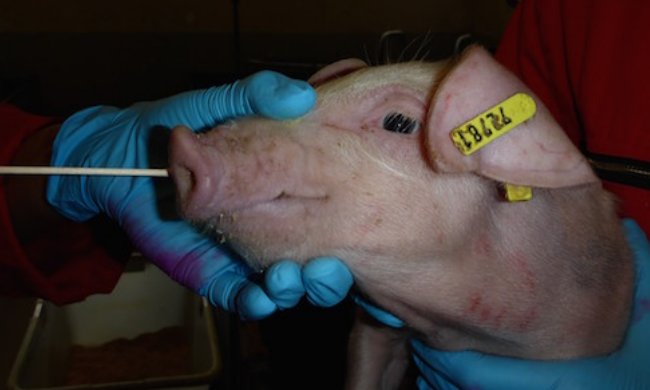A new service which will help farmers and vets track cases of Swine Flu across much of Europe has been launched by Ceva.
The Interactive Swine Flu Map shows the development of the strains of influenza detected on pig units by country and even by region, updated on a quarterly basis. To protect farmers’ privacy individual farms are not identified in the Interactive Swine Flu Map.
Dr Kathrin Lillie-Jaschniski, a specialist veterinarian with Ceva said that it is important for veterinarians and farmers to know if influenza is occurring in their region and also the different strains, to be able to make the correct diagnosis and decide upon the appropriate prevention and vaccination programme.
“Evidence that classical and pandemic strains of flu are occurring in a particular region gives a strong signal that vaccination should be considered,” said Dr Lillie-Jaschniski. “Pandemic strains can also spill over from pigs to humans and vice versa, so there is a public health aspect, too.
“Apart from the health aspect, swine flu can have serious economic consequences for a pig herd, especially if other respiratory infections are present. One French survey showed the cost of an outbreak in gilts was as much as 16 Euros loss per gilt while another study from Sweden calculated a loss of 77 Euros per sow.”
Ceva’s support of the diagnosis of influenza in Europe has enabled it to introduce this unique service. Since 2009, pandemic strains have been detected in pig herds, changing the dynamics on many farms.
To detect the virus, a variety of samples – such as nasal swabs, oral fluids or lung tissues – are taken in herds with acute clinical signs of flu, or those with persistent respiratory or reproductive symptoms, and are then analysed in laboratories.




